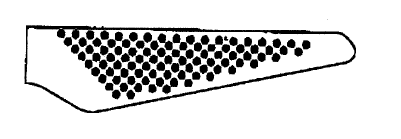HvJ EU: Daadwerkelijk gebruik van geregistreerd vormmerk en technische uitkomst
HvJ EU 6 maart 2014, gevoegde zaken C-337/12 P, C-338/12 P, C-339/12 P, C-340/12 P (Pi-Design e.a. / Yoshida Metal Industry) - dossier
 |
 |
53 Lastly, the General Court summarised, in paragraph 31 of the judgments under appeal, the criterion for the scope of the examination to be carried out by the competent authority when assessing the characteristics of the signs at issue, by ruling that ‘only the shape as reproduced in the registration application may be the subject-matter of the examination of the trade mark’.
54 However, it follows from Lego Juris v OHIM that the competent authority may carry out a detailed examination that takes into account material relevant to identifying appropriately the essential characteristics of a sign, in addition to the graphic representation and any descriptions filed at the time of the application for registration.
55 The possibility afforded in Lego Juris v OHIM to the competent authority when examining a three-dimensional sign can be extended to the examination of any sign constituted by the shape of goods within the meaning of Article 7(1)(e)(ii) of Regulation No 40/94 (see by analogy, as regards Article 7(1)(b) of the regulation, inter alia, Henkel v OHIM, paragraph 38, and Case C‑96/11 P Storck v OHIM [2012] ECR, paragraph 33).
56 It is important to ensure that economic operators cannot improperly appropriate for themselves certain signs which only incorporate a technical solution, registration of which as a trade mark would impede the use of that technical solution by other undertakings (see, to that effect, Lego Juris v OHIM, paragraph 48).
57 It is true, according to the case-law of the Court referred to in paragraphs 31 and 32 of the judgments under appeal, first, that the graphic representation of a mark must be self-contained, easily accessible and intelligible, in order that a sign may always be perceived unambiguously and in the same way so that the mark is guaranteed as an indication of origin. Secondly, it is apparent from the case-law of the Court that the function of the graphic representability requirement is, in particular, to define the mark itself in order to determine the precise subject of the protection afforded by the registered mark to its proprietor (see, to that effect, Case C‑273/00 Sieckmann [2002] ECR I‑11737, paragraphs 48 to 52, and Case C‑307/10 Chartered Institute of Patent Attorneys [2012] ECR, paragraph 37).
61 It follows that, in holding that the provisions at issue preclude consideration of the actual use made of the trade mark following its registration, the General Court erred in law.





















































































